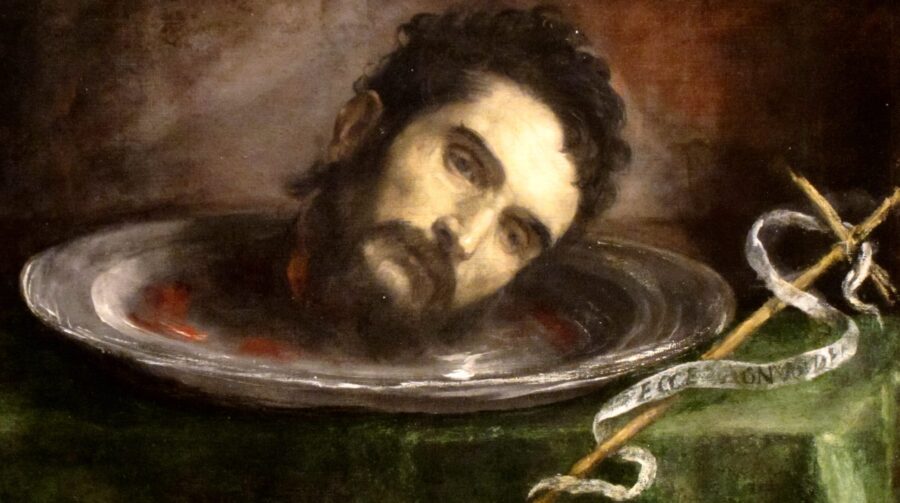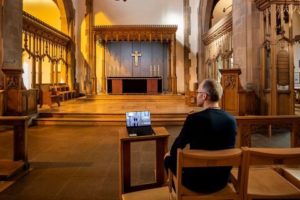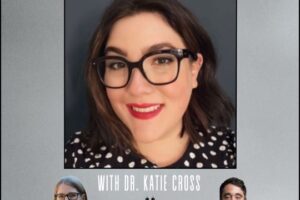In the Gospel According to St. Mark, Jesus introduces and institutes the Eucharist Feast in very few words:
And as they were eating, he took bread, and after blessing it broke it and gave it to them, and said, “Take, this is my body.” And he took a cup, and when he had given thanks he gave it to them, and they all drank of it. And he said to them, “This is my blood of the covenant, which is poured out for many. Truly, I say to you, I will not drink again of the fruit of the vine until that day when I drink it new in the kingdom of God.” (14:22-25)
The purpose of this blog series is to point to the literary structure and devices which Mark uses and demonstrate their interpretive import, or theological significance, when applied to the passage in view. Each post will trace one of three themes in Mark and demonstrate their point of convergence in the passage above. Put another way, I will reflect on three themes in Mark that are big enough that the reader can use this reflection to see the ways in which every single passage in Mark 1-14 sets up the institution of the Eucharist Feast.
Beware the Leaven: The Feast of Unleavened Bread
Peter Leithart recently pointed out to me that wherever Jesus goes, friendships are formed. Only sometimes those friendships are built on the newfound foundation of rejecting Jesus. Friendship with God in the Old Testament meant sharing membership in the Divine Council—this is the way in which Abraham, Moses, and Joshua were called friends of God. In Mark, the antithesis of this kind of friendship grows up among the enemies of Jesus from very early on: “The Pharisees went out and immediately held counsel with the Herodians against him, how to destroy him.” (3:6) Coming as the New Sun, Jesus threatens the old lights, and they begin to band together.
Opposition to Jesus begins when he makes a justification for eating with sinners and tax collectors instead of apologizing for it (2:16-17). It continues when he subverts their traditions regarding fasting (2:18-22) and Sabbath-keeping (2:23-3:5). In the longest discourse between Jesus and his opponents before the climax of his arrival in Jerusalem, Jesus clearly communicates one of his principles: the “commandments” or “traditions” of men do not actually purify, they do not lead to actual growth, and they perpetuate rather than mitigate the desolation and fruitlessness of the earth.
But not only is the religious power of the Pharisees sterile, so is the political power of the Herodians.
Mark refers to the Herodians less often than the Pharisees, but he dedicates sixteen verses to the story of Herod’s dealings with John the Baptist. His caging up of John in the first chapter contributed to the development of the wild and desolate setting which we explored in the first section, and the reader has never been asked to imagine a way in which Herod’s tenure as a “heavenly luminary” has been at all fruitful. But in chapter 6, the Herodians become an illustration of everything that is wrong with the hearers of the word. John sows the word of God and, at first, Herod receives him, “knowing that he was a righteous and holy man… [keeping] him safe. When he heard him, he was greatly perplexed, and yet he heard him gladly.” (6:20) Herodias’ “desire for other things” sparks a plot to get John beheaded, and Herod’s “cares of the world” handcuff him from into keeping a foolish oath to Herodias’ daughter. The result of Herod’s rejection of “the sower sowing the seed” is the grotesque head of John on a platter. The first level of meaning is obvious—Herod and all his house reject the word of God and their wickedness is demonstrated—but Mark has more to communicate about this scene in his structuring of the middle of his gospel.
This scene, which ends with the details of the passing of the head-bearing platter from Herod to girl to mother, is followed immediately by a scene which we have already introduced: the first bread-feast. At the end of the scene with the first bread-feast, in 6:41-42, Jesus recapitulates the actions of Herod. Herod breaks John’s body; Jesus breaks the bread. Herod gives John’s broken body to the girl; Jesus gives the broken bread to his disciples. The girl gives John’s broken body to her mother for her wicked enjoyment of death; the disciples give the broken bread to the people for their righteous enjoyment of life. Herod ungratefully consecrates an anti-Eucharist, breaking the body of a holy man, the word of God is silenced in his household, and whatever presence of God there was is snuffed out; Jesus will give thanks for bread, and the word of God will reverberate among his disciples, even if they do not understand it, and Yahweh will be present in their fellowship.
If the suggestive structural parallels are not persuasive enough, Jesus draws the connection between Herod’s feast and the bread-feasts himself in 8:14-20, the passage that directly precedes his big journey. In response to their discussion of the fact that they had forgotten to bring bread, as he presses them for not learning the lesson of the first two bread-feasts, he adds, “Watch out; beware of the leaven of the Pharisees and the leaven of Herod.” (8:15) Whatever these words might signal outside Mark’s text, there are only two passages within Mark that the reader is expected to have had in view, both of which we have already discussed: Herod’s wicked birthday and the first bread-feast in 6:14-44, followed by the meal with the Pharisees in 7:1-23. The Herodians celebrate a feast in honor of their “star”; the Pharisees celebrate their lunar feasts. The Herodians use their political power to put John to death; the Pharisees use their religious power to insist on cleanliness. Both only feed their own people.
The two bread-feasts which Jesus celebrates and superintends have already corrected both of these errors. Jesus is the New Sun, and his festal calendar replaces the Herodian and Pharisaic calendars. Jesus uses his kingly power to multiply bread, not to kill; and he uses his priestly power to share a meal with those who have not washed their hands. Everyone eats at Jesus’ feasts.
But wait; there’s more! The bread-feast in chapter 14 also has the Herodians and Pharisees in view.
After Jesus warns his disciples about the leaven of the Pharisees and of Herod, he hosts one final feast on “the Passover and the Feast of Unleavened Bread.” (14:1, 12) This Unleavened Bread is not infected with the leaven of the Pharisees and Herod, just as the unleavened bread in the original feast is not leavened with the leaven of the Egyptians. Israel was commanded to keep this feast on this day because “on this very day [Yahweh] brought [them] out of the land of Egypt. Therefore [they] shall observe this day, throughout [their] generations, as a statute forever.” (Exod. 12:17-18) Before Easter Sunday, before Good Friday, on Maundy Thursday, Jesus says that this is the day of their deliverance. Jesus, the New Sun, has turned the darkest Night into Day. The last page of the lunar calendar of the Jews has been turned. The “morning star” has arisen in their hearts, and in a little room in Bethany, the first Eucharistic Feast was shared.
The Eucharistic Feast delegitimizes the feasts of the Herodians and the Pharisees. The bread Jesus serves foils the Herodian’s bread because, instead of breaking the body of another person, he breaks his own body. This is the meaning of “He who loses his life will gain it,” and “The Son of Man came not to be served, but to serve, and to give his life as a ransom for many.” (Although, you can follow the English pun through Mark and look for the places in which the Son of Man is served, even as a meal.) The bread he serves foils the Pharisees’ bread because, instead of being a sterile vehicle for maintaining the distinction between pure and impure, it is a virile power that purifies the impure and restores them to the table fellowship of Yahweh.
As a final word, I would be remiss not to make a few observations about the Eucharistic Feast as New Passover. Because much has already been written about the structure of Mark recapitulating the Exodus, and because the relationship between the Passover and the Eucharist has already been expounded in many places, I will relieve myself of reproducing those connections here. Instead, we will simply gesture at a few details. First, Moses led the Israelites out from the bondage of slavery, performing many mighty signs and showing their gods to be impotent. In Mark, Jesus leads the true Israelites out from the bondage of unclean spirits, performing many exorcisms and showing the organizing power of the Herodians and the Pharisees to be impotent. Second, Moses organizes the Israelites into camps. In Mark, Jesus organizes the masses whom he feeds into groups of hundreds fifties (6:39-40). Third, Egypt’s army is toppled, and Moses leads a community who feasts in the wilderness. The temple is toppled, and Jesus leads a community who feasts in houses. This should help the reader discern the Eucharistic significance of the house scenes and the exorcism scenes.
Each of the major themes in Mark somehow enriches our reading of Jesus’ institutions of the Eucharist. It is my hope that, having considered my observations, the reader will be able to read any passage from Mark 1-14 and discern the ways in which it anticipates and enriches the institution of the Eucharistic Feast that both symbolically summarizes and powerfully effects what Mark has called “the beginning of the Gospel of Jesus Christ.” (1:1)





Leave a Reply
Your email is safe with us.